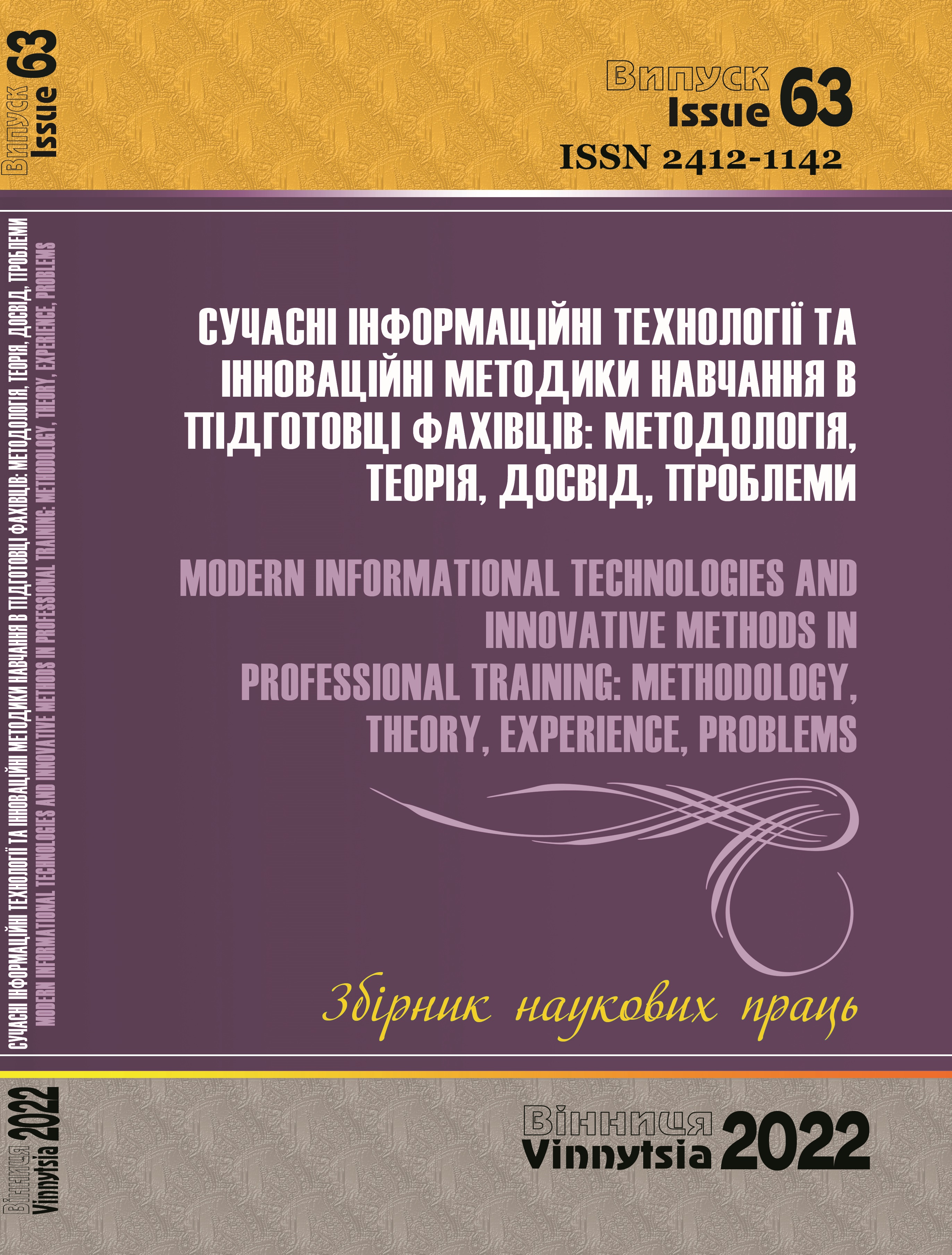BLENDED EDUCATION IN HIGHER EDUCATION INSTITUTIONS
DOI:
https://doi.org/10.31652/2412-1142-2022-63-164-171Keywords:
pandemic Covid-19, innovative technologies, educational process, mixed form of education, classroom, institution of higher education, work, studentAbstract
The article considers the content and essence of the concept of blended form of education.
Education, which has undergone some changes in recent years, has been driven by the Covid-19 pandemic,
with a shift from a common classroom learning system, face-to-face (offline), to e-learning (distance). New
approaches of learning are emerging with the advent of the World Wide Web and the ability to transcend
space and time. We must say that the new learning models improve individual work, stimulate teamwork
and are more comfortable.
It is emphasized that blended learning is a promising alternative in the education system due to its
advantages over the classical approach. In academic circles, this form of education is rapidly developing
and widely used, is one of the key areas of modernization of education in higher education institutions. This
is the so-called mix of traditional learning and asynchronous or synchronous e-learning.
The organization of the educational process in higher education institutions using blended form of education
is analyzed. The main models of training organization are considered, it should be mentioned that the most
popular is the rotation of the station.
It was stated that according to the results of the interrogation students do not fully understand the essence of the blended form of education and its advantages, they are insufficiently motivated and ready for self-
discipline and self-study.
Downloads
References
Долгова, Т. В. (2017). Смешанное обучение – инновация ХХІ века. Интерактивное образование.
Информационно-публицистический образовательный журнал. URL: https://bodia.online/l/kYBZcd
Bonk, C. J., & Graham, C. R. (2006). Handbook of blended learning: Global Perspectives, local designs. San
Francisco, CA: Pfeiffer Publishing. URL: http://curtbonk.com/toc_section_intros2.pdf
Blended Learning. The Clayton Christensen Institute. Retrieved from: https://goo.gl/1IpmhL
Greenberg, B. Blended Learning: Personalizing Education for Students: online course. URL:
Lathan, J. Complete Guide to Teacher-Centered vs. Student-Centered Learning. University of San Diego. URL:
https://onlinedegrees.sandiego.edu/teacher-centered-vs-student-centered-learning/
Staker, H., & Horn, M. (2012). Classifying K-12 blended learning. https://files.eric.ed.gov/fulltext/ED535180.pdf
Опитувальник Google Forms: UHR https://docs.google.com/ forms/d/1UFFTpsDhC7zi 4WwlpQv8kBLk0
QrJ9C3VVngh8w4/edit
Downloads
Published
Issue
Section
License
Copyright (c) 2022 Дар’я Коровій, Наталія Лазаренко

This work is licensed under a Creative Commons Attribution 4.0 International License.

